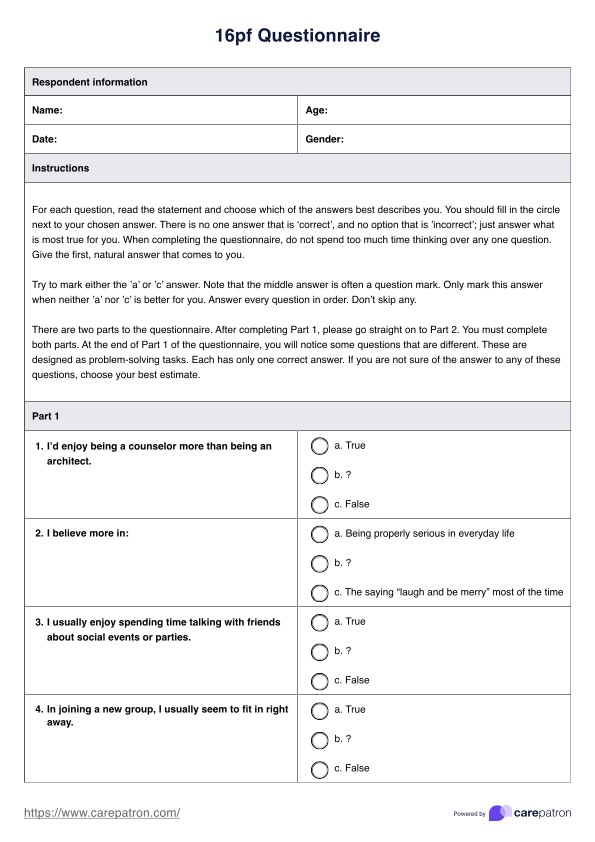The 16pf test enhances the client's awareness of their personality structure or quickly allows a therapist, counselor, or potential employer to understand the test taker's personality. It was not developed for identifying psychopathology but also has some utility in clinical settings and clinical diagnosis outside of the normal personality range.

16pf
Assess your clients' personality traits using our helpful 16 Personality Factors questionnaire. Try it today!
Use Template
16pf Template
Commonly asked questions
The 5 global variables derived from the 16pf are extraversion, anxiety, toughness, independence, and self-confidence.
The Sixteen Personality Factor (16PF) questionnaire measures 16 different personality characteristics or traits. The respondent is given a score for each dimension, which indicates the extent to which they possess that personality trait.
EHR and practice management software
Get started for free
*No credit card required
Free
$0/usd
Unlimited clients
Telehealth
1GB of storage
Client portal text
Automated billing and online payments











